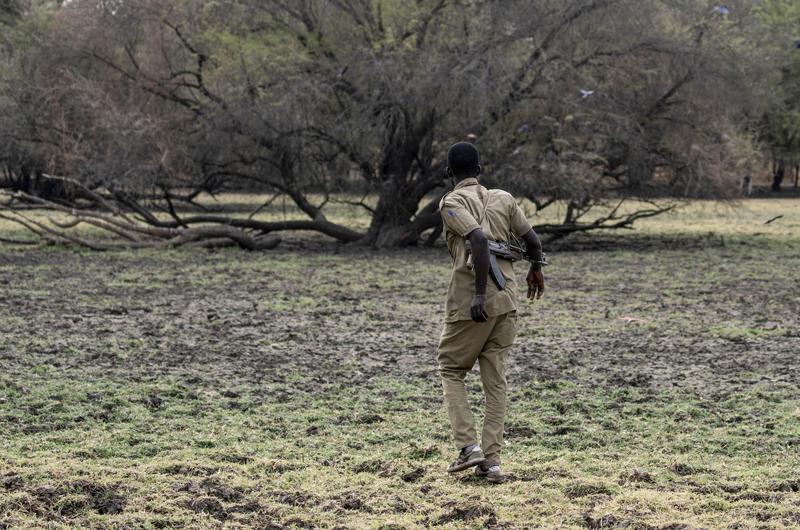 A ranger patrols in Sudan's Dinder National Park on April 7. (ABDULMONAM EASSA / AFP)
A ranger patrols in Sudan's Dinder National Park on April 7. (ABDULMONAM EASSA / AFP)
DINDER, Sudan-Tucked away near the Ethiopian border, Sudan's Dinder National Park boasts the country's most diverse wildlife. But its rangers face a daily battle to protect it from rising human encroachment.
Spread over more than 10,000 square kilometers, some 400 kilometers southeast of Khartoum, the park is Sudan's biggest and abuts Ethiopia's Alatash National Park.
Sandwiched between the vast grasslands of the Sahel and the forests of the Ethiopian highlands, the park boasts a variety of habitats that have made it a haven for wildlife.
Freshwater lakes dot the park's woodlands and savanna, making it a key flyway for migratory birds.
Any expansion to the villages will greatly harm the reserve (in Sudan's Dinder National Park), disturb the wildlife and reduce their resources ... It would be best to move those villages to better serviced areas outside the reserve.
Omar Mohamed, head of Dinder's wildlife research station
"It enjoys the richest wildlife in Sudan," said Albadri Alhassan, head of the park's development organization. "But the growing human violations threaten to diminish the wilderness."
When the park was first declared a protected reserve in 1935, the area was sparsely inhabited.
But in recent decades, the population has soared in the villages that dot the park and its surrounding buffer zone, creating huge pressure for new land to grow crops.
As the traditional grazing lands of cattle herders were plowed up, they in turn have increasingly encroached on the park in search of pasture.
"Such behaviors are posing an immense threat to the reserve," said the head of Dinder's wildlife research station, Omar Mohamed.
ALSO READ: Cameroon allows logging in forest that's home to gorillas
Among the hardest-hit species has been the giraffe, which has disappeared from the park in the face of habitat loss and other environmental factors, Mohamed said.
Villagers say they do their best to follow park restrictions but add they desperately need more land to feed themselves. "We use traditional agriculture and we prevent our animals from grazing outside our village," said farmer Abubakr Ibrahim from Mai Carato, a village on the west bank of the Rahad River, which flows through the reserve.
Human-nature balance
"Any expansion to the villages will greatly harm the reserve, disturb the wildlife and reduce their resources," Mohamed said. "It would be best to move those villages to better serviced areas outside the reserve."
Human encroachment disturbs the park's wildlife in other ways too.
Hungry villagers often harvest wild honey from the park's woods, lighting fires to create smoke to ward off the bees, in breach of park rules.
Rangers patrol the rugged terrain in search of violators, who can face hefty fines or up to six months in prison depending on the offense.
"We try to pursue them but sometimes they flee before we arrive," ranger Mohamed Makki said.
All is not lost though. The park's wildlife research chief says sightings of hyenas, lions and smaller cats like genets and servals remain common, particularly at night.
By day, visitors can see African buffalo and several species of gazelle as well as an array of birdlife, both resident and migratory.
READ MORE: US finalizes oil drilling plan in Alaska wildlife refuge
Despite all the challenges, the reserve has "remained pristine and managed to maintain its wilderness", Mohamed said. "All we want is to keep it this way."


